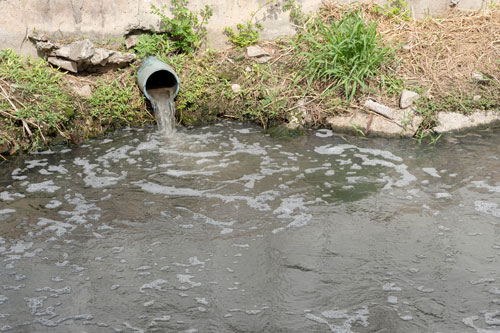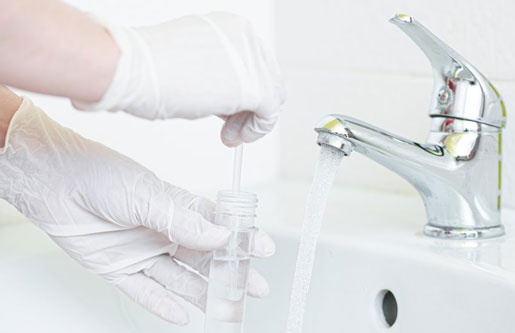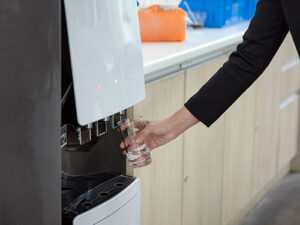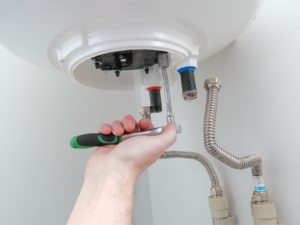Although water is essential for our health and we use it every day, water testing is not always at the forefront of our minds. The unfortunate reality is that most home and business owners only test their water quality periodically to check for impurities and contaminants. If you suspect something is wrong with your water supply, your assumption is often correct.
Although Maryland’s water systems are clean, it is not the source of the water that is causing the problem. Contaminants affect your supply en-route to your home, and they make the water unsafe to drink or even use for bathing and cleaning. One pollutant that may affect your water supply is manganese.
In small amounts, manganese is beneficial for human health, but too much of it does have health implications. Manganese is easily detectible in water through appropriate testing procedures. Still, in some cases, you can smell and taste it in your water supply before you know it’s there.
What Is Manganese?
Manganese is a trace mineral that exists in rocks, food, air, beauty supplies, and the soil. The human body doesn’t produce it, but it does need small amounts of the mineral to function adequately. Some people have manganese deficiencies and need to take supplements to maintain their health.
Our bodies store manganese in the liver, pancreas, brain, bones, and kidneys. Despite its health benefits, too much of a good thing does the opposite of what it should. Excess ingestion of the mineral, especially for young infants, poses health risks.
How Does Manganese Enter Your Water Supply?
Naturally-occurring manganese in soil and rocks is rarely an issue. Yet, in general, there are higher concentrations of the mineral in standing water than groundwater. When there is human intervention, large quantities of the manganese start to seep into the water.
In Prince George’s and Montgomery counties in Maryland, water is regulated and treated by the Washington Suburban Subsidiary Commission (WSSC). However, according to a 2019 report, 10 micrograms per liter of manganese were found in tap water coming from the Potomac River. While manganese is not a regulated substance by the WSSC, these high levels can negatively impact the health of people consuming water from their tap.
Human activities such as mining and drilling increase the amount of manganese, which then flows into ground and surface water. Additionally, it is present in materials such as glass and fertilizers. Manganese is also present in batteries. With improper disposal, they end up in landfills, and the soil absorbs the toxins.
Signs of Manganese in Your Water Supply
The only way to know if there is manganese in your water is to conduct water testing on your supply. However, some signs are tell-tale indicators that there is a large amount of it even without a test. These signs include:
- Water discoloration: Manganese causes your water to turn strange colors such as black, purple, or dark red.
- Foul-smell: A foul smell could indicate ample amounts of manganese or other minerals in your water.
- Bitter / Metallic taste: Water with excessive amounts of trace minerals has an unpleasant and metallic taste that reacts to other chemicals in the water or food.
- Stains on clothing: Manganese causes your laundry or clothes to stain and can discolor your plates and appliances.
- Pipe constrictions: The mineral builds up in your pipe systems and may clog or constrict them over time.
- Slime in toilets and water tanks: Manganese buildup can lead to iron bacteria formations, which cause slime to form in your plumbing systems and water tank.
If you notice any of the above signs, water testing is the only way to determine what kind of contaminants exist in your supply. Our experts at Hague Quality Water of Maryland help you get to the bottom of the matter and offer comprehensive solutions to decrease manganese in your water supply.
What Are the Effects of Manganese in Your Supply?
Manganese affects people in different ways and ultimately depends on the source of contamination and the amount in your supply. Most importantly, it’s the age of the person ingesting it that may be the biggest concern.
Although adults may also have adverse reactions to excess manganese, children and infants are most susceptible to problems. Symptoms of manganese poisoning include:
- Mobility problems
- Learning difficulties
- Intellectual impairments
- Poor motor skills in infants
- Memory and attention disorders
- Tremors
- Muscle spasms
- Reduction in IQ
- Hallucinations
- Aggressive or irritable behavior
- Bronchitis
Consistent testing is necessary to ensure that members of your household don’t suffer from any of these problems.
Test Your Water with Hague
It is never a convenient time to deal with contamination issues. However, periodic tests ensure that your supply is safe to use and determine if your current water treatment service is working. We know the most common issues that Maryland water supplies face and work quickly to resolve them, with effective water treatment solutions like the Hague WaterMax® BEQ system. This system is specifically designed to treat city water and remove harmful contaminants, ensuring your water is safe and drinkable.
At Hague, we have the right equipment to detect and effectively remove high concentrations of manganese in your supply. We offer free in-home testing in addition to our new contact-less testing kit that helps us maintain safe social distancing measures. For $200, the water test kit is mailed to you, and then the sample is mailed to a lab. The results are then sent directly back to you.
For all your water testing and treatment needs, call Hague Quality Water of Maryland today at (410) 757-2992.






